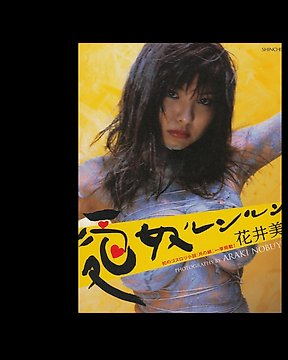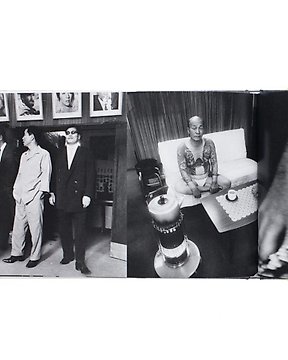Perfect, aligato
Se oversættelseHitomi Wtanabe - 1968 Shinjuku - 2014
Nr. 85529933



1968 Shinjuku
Hitomi Wtanabe
townhouse/2014/japanese/254 x 182 x 16 mm
I began taking these photographs in 1967.
Most of them were taken up to around 1969, when the Shinjuku West Exit "plaza" became a "passageway" after a rally called "folk guerrilla" by the media was cleared by riot police.
At that time, an editor took me to a bar called Unicon near Shinjuku Gyoen for the first time. After that, I went to Bizarre, which played modern jazz, Trevi, Kiba, DIG, DUG, and Pit Inn, which are still going strong today. I also attended Juro Karo's Red Tent at Hanazono Shrine, avant-garde films at ATG, and happenings (performances) on the street before the pedestrian paradise was built. ......
It was in Shinjuku that I first encountered the term "underground," and it was also around this time that I encountered the "rariri" hootenanny of the underground.
Shinjuku, not Shibuya, Shimokitazawa, or Kichijoji, was the culture.
One night, as these days continued, I came across a crowd of people in the Shinjuku area. It was "10.21 International Anti-War Day. As I was jostled by the demonstrators, I experienced with my whole body what the Vietnam War, which I had only known about as information, had brought.
In Shinjuku in 1968, the era was summed up.
Excerpt from the afterword
This is not a photograph of the past, but of the present. -Nobuyoshi Araki, excerpt from his letter of recommendation
1968 Shinjuku
Hitomi Wtanabe
townhouse/2014/japanese/254 x 182 x 16 mm
I began taking these photographs in 1967.
Most of them were taken up to around 1969, when the Shinjuku West Exit "plaza" became a "passageway" after a rally called "folk guerrilla" by the media was cleared by riot police.
At that time, an editor took me to a bar called Unicon near Shinjuku Gyoen for the first time. After that, I went to Bizarre, which played modern jazz, Trevi, Kiba, DIG, DUG, and Pit Inn, which are still going strong today. I also attended Juro Karo's Red Tent at Hanazono Shrine, avant-garde films at ATG, and happenings (performances) on the street before the pedestrian paradise was built. ......
It was in Shinjuku that I first encountered the term "underground," and it was also around this time that I encountered the "rariri" hootenanny of the underground.
Shinjuku, not Shibuya, Shimokitazawa, or Kichijoji, was the culture.
One night, as these days continued, I came across a crowd of people in the Shinjuku area. It was "10.21 International Anti-War Day. As I was jostled by the demonstrators, I experienced with my whole body what the Vietnam War, which I had only known about as information, had brought.
In Shinjuku in 1968, the era was summed up.
Excerpt from the afterword
This is not a photograph of the past, but of the present. -Nobuyoshi Araki, excerpt from his letter of recommendation
- 114
- 4
- 2
Very good
Se oversættelseVery good
Se oversættelseVery good
Se oversættelseVery good
Se oversættelsereasonable fast delivery to europe. perfect and secure packaging. and above all, low cost declaration of the sender so parcel could avoid additional custom expenses. thank you for that! :)
Se oversættelseThank you Shou. Love the books and well packaged. Definitely buying again. Love from Kota.
Se oversættelseso nice, thank you everything perfect!
Se oversættelseit`s broken at the spine 3 times
Se oversættelseZuverlässige Lieferung.Buch sehr gut Verpackt. Vielen Dank für das Bild und die Grüsse!!
Se oversættelseExactly as described. Thanks!!!
Se oversættelseExactly as described. Excellent communication, secure shipping. Thanks!!
Se oversættelseVery good.
Se oversættelsenice copy, thank you!
Se oversættelseGreat item, well packed, swiftly sent. Thanks! 🙏🏻
Se oversættelsePerfect deal ! Very happy with the book !Thank You !!
Se oversættelseAll good and got my order in perfect condition.
Se oversættelseAlles bestens, gerne wieder!!!
Se oversættelseVery nice copy! Happy customer who will certainly do business again!
Se oversættelseGood transaction, thanks.
Se oversættelsevery good
Se oversættelsevery good
Se oversættelsevery good
Se oversættelseVery good
Se oversættelseVery good
Se oversættelse








